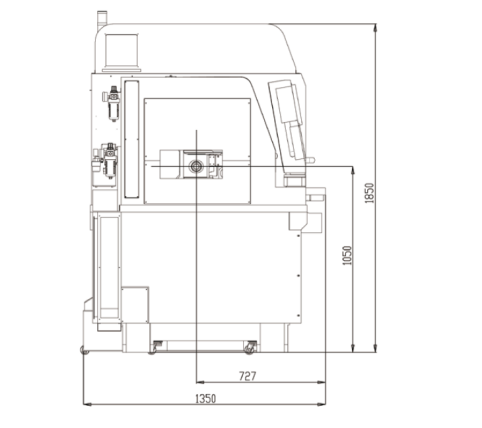Understanding Bar Feeder Lathes: Enhancing Precision and Efficiency in Machining
Bar feeder lathes are specialized machines designed to enhance the efficiency of turning operations in the manufacturing industry. They play a critical role in automating the feeding process of raw materials, which can significantly reduce setup times and increase productivity. A bar feeder is typically integrated with a lathe, allowing for the automatic loading of bar stock into the lathe for machining.
One of the main advantages of using a bar feeder lathe is its ability to handle long lengths of material. This is particularly beneficial for high-volume production, where consistent and uninterrupted machining is essential. By continuously feeding the bar stock into the lathe, manufacturers can maintain a steady workflow, minimizing downtime between cycles. This capability not only enhances productivity but also ensures that the machining process remains efficient and cost-effective.
Bar feeder lathes come in various configurations, including automatic and semi-automatic systems. Automatic bar feeders are equipped with advanced controls and sensors that enable them to operate with minimal human intervention. This level of automation allows for precise adjustments and monitoring of the feeding process, which can lead to higher quality machined parts. Meanwhile, semi-automatic systems may require some manual input but still offer considerable improvements over traditional methods.
In terms of versatility, bar feeder lathes can accommodate a range of materials, including metal, plastic, and composite materials. This adaptability makes them suitable for various applications across different industries, from aerospace to automotive and beyond. The ability to work with multiple types of materials further enhances their practicality, making them an essential tool for manufacturers aiming to streamline their operations.
Another significant benefit of bar feeder lathes is their contribution to reducing waste. By optimizing the length of bar stock used and ensuring precise cuts, manufacturers can minimize excess material that may otherwise be discarded. This not only lowers material costs but also supports more sustainable manufacturing practices.
For manufacturers considering the integration of bar feeder lathes into their operations, it’s essential to assess the specific needs of their production processes. Factors such as the type of materials processed, the required precision, and the volume of production will all play a role in determining the most suitable bar feeder system.
In conclusion, bar feeder lathes represent a vital advancement in machining technology. Their ability to automate the feeding process, handle various materials, and reduce waste makes them an invaluable asset in modern manufacturing. By investing in these machines, manufacturers can enhance their operational efficiency, improve product quality, and ultimately gain a competitive edge in the industry.
One of the main advantages of using a bar feeder lathe is its ability to handle long lengths of material. This is particularly beneficial for high-volume production, where consistent and uninterrupted machining is essential. By continuously feeding the bar stock into the lathe, manufacturers can maintain a steady workflow, minimizing downtime between cycles. This capability not only enhances productivity but also ensures that the machining process remains efficient and cost-effective.
Bar feeder lathes come in various configurations, including automatic and semi-automatic systems. Automatic bar feeders are equipped with advanced controls and sensors that enable them to operate with minimal human intervention. This level of automation allows for precise adjustments and monitoring of the feeding process, which can lead to higher quality machined parts. Meanwhile, semi-automatic systems may require some manual input but still offer considerable improvements over traditional methods.
In terms of versatility, bar feeder lathes can accommodate a range of materials, including metal, plastic, and composite materials. This adaptability makes them suitable for various applications across different industries, from aerospace to automotive and beyond. The ability to work with multiple types of materials further enhances their practicality, making them an essential tool for manufacturers aiming to streamline their operations.
Another significant benefit of bar feeder lathes is their contribution to reducing waste. By optimizing the length of bar stock used and ensuring precise cuts, manufacturers can minimize excess material that may otherwise be discarded. This not only lowers material costs but also supports more sustainable manufacturing practices.
For manufacturers considering the integration of bar feeder lathes into their operations, it’s essential to assess the specific needs of their production processes. Factors such as the type of materials processed, the required precision, and the volume of production will all play a role in determining the most suitable bar feeder system.
In conclusion, bar feeder lathes represent a vital advancement in machining technology. Their ability to automate the feeding process, handle various materials, and reduce waste makes them an invaluable asset in modern manufacturing. By investing in these machines, manufacturers can enhance their operational efficiency, improve product quality, and ultimately gain a competitive edge in the industry.
Related Blog













